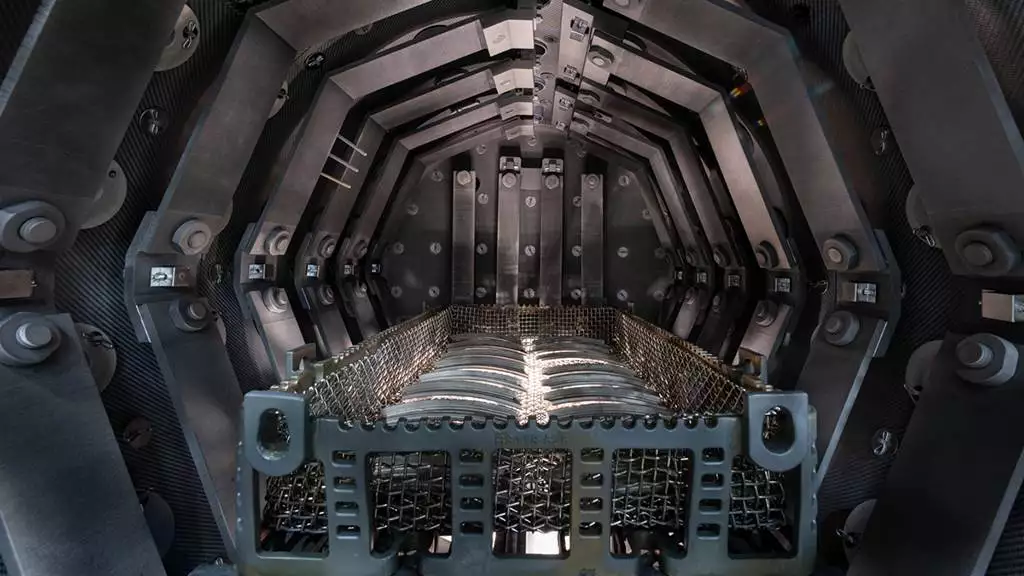
One way to extend the life of your furnace and make your equipment perform more effectively is to remove contaminants from within the hot zone by running a cleanup cycle. This procedure is one of several preventive steps that help maintain the overall health of your furnace, as detailed in our recommended daily, weekly, monthly and semiannual maintenance checklists. Today, we will take a closer look at some of our experts’ other recommendations for hot zone maintenance and the frequency at which these actions should be completed.
Maintaining the Hot Zone
Repair/Replace Broken Elements
On a daily basis, visually inspect the condition of the heating elements and shields. Look for any pieces that are missing, broken, cracked or loose. Elements in these conditions can lead to temperature problems, such as inadequate heat and poor uniformity.
If you discover graphite elements are missing or damaged, you would generally replace the heating elements rather than repairing them. This is because graphite is not extremely brittle, so you don’t have to worry about accidently breaking surrounding heating elements during the replacement process.
However, all-metal heating elements are more fragile once they’ve been heated, so there are two common methods for handling broken elements. One option is to replace it in the same way you would a graphite element. Alternatively, all-metal elements can be repaired with an element patch, which allows you to clamp on small sections of metal that bridge the broken element. This avoids having to unbolt the heating elements between connection points and replace an entire section, thus reducing the chances of damaging surrounding elements.
When you do need to repair or replace elements, having a spare parts kit on hand can save you valuable time and allow for quick hot zone maintenance. Some basic hot zone parts you should try to keep in stock include an element strip kit, insulators, element hangers, carbon fiber composite, hearth posts, gas nozzles, nuts and bolts.
Note: When replacing several heating elements at once, it is strongly recommended that you perform a conditioning cycle to allow the new elements to expand and contract at a slow ramp rate; this helps avoid damaging the element supports, hot zone and load when you resume your normal process in the furnace. A Temperature Uniformity Survey may also be required to measure the temperature variation within the furnace’s work zone before and after thermal stabilization.
Check for Discoloration
The heating elements and shields should also be checked daily for signs of discoloration. Discoloration in the furnace indicates contamination. If parts of the hot zone begin to show signs of discoloration, a leak check and/or furnace cleanup cycle may be required as a first step for troubleshooting and locating the source of the contamination. It is imperative that the source is identified to prevent continued discoloration and degradation of your hot zone.
Prevent Arcing
On a weekly basis, hand-tighten nuts, bolts and element connectors inside the furnace. When parts become loose, they can cause arcing, which then burns away the hot zone’s insulation, affects the overall quality of the heating elements and can lead to discoloration. Hand-tightening is the recommended method to avoid over-tightening and breaking of graphite heating elements.

In addition to inspecting your hot zone for signs of broken elements, discoloration and arcing, you should also create a tailored preventive maintenance plan, which can play a critical role in maximizing the lifespan of your furnace and optimizing your hot zone’s performance for as long as possible. If you would like assistance in creating a customized preventive maintenance package based on your processes, contact Ipsen at 1-844-GO-IPSEN.
Replacing the Hot Zone
Preventive maintenance can extend the life of your hot zone, but when it no longer operates at peak performance, it may be time to consider replacing it. Depending on your process and parts, hot zones can last for many years (5-8 years on average) or may need to be replaced more frequently. Several factors that affect the lifespan of a hot zone include:
- Leaks – oxygen in the furnace can cause the hot zone to degrade faster
- Cleanliness – contamination in the furnace can cause hot zone degradation
- Pressure – high pressure gas quench, by nature, creates a turbulent environment in the furnace; therefore, the higher the pressure and larger the motor, the greater potential for wear and tear
- Temperature – higher temperature ranges can potentially cause more wear on the hot zone
- Total operating time – the more cycles your furnace runs, the more frequently your hot zone will need maintenance
So, when is it time to replace your hot zone? You can determine this by checking the heating elements monthly for signs of deterioration. Signs of arcing, cracking and degradation on the hot zone’s bottom third elements can indicate it’s time for a replacement. Also inspect the insulation for signs that it’s breaking down, warping or if the plenum frame is visible, as well as check the hearth rails for distortion and overall wear.
Certain factors during your process cycle can also serve as warning signs of a degrading hot zone, including loss of temperature uniformity, extended cycle times, heat loss and constant discoloration of your parts or hot zone.
In the end, it is essential that regular inspection of your furnace and hot zone is incorporated into your preventive maintenance plan. Being proactive about hot zone maintenance and replacement can end up saving you from unwanted downtime and higher operating costs – all of which can result from continuing to run cycles in a furnace that exhibits signs of degradation and heat loss.
When it is time to replace your hot zone, there are also several key factors you should keep in mind during the process of removing the old hot zone and installing a new one.
